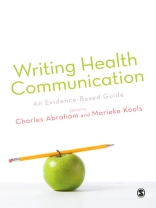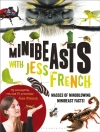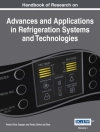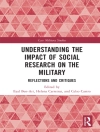Leaflets, information sheets and written materials designed to influence people′s health-related behaviours often fail to achieve their aims. To improve such written materials we need to understand:
(i) how people read and process information,
(ii) how to design persuasive messages, (iii) how to make written text easy to use and (iv) how to change behaviour.
Writing for Health Communication: An Evidence-Based Guide for Professionals is a practical guide to producing effective written materials. The book presents easy-to-understand, evidence-based guidance on providing information, presenting persuasive messages and promoting behaviour change. Topics include:
— Message framing,
— Use of fear appeals,
— Tailoring messages,
— Using graphics,
— Behaviour change
Each chapter is illustrated with examples — including both good and bad practice and covering a range of health topics. For students and professionals in healthcare, health psychology, health education and promotion, and public health, Writing for Health Communication: An Evidence-Based Guide for Professionals is an invaluable guide to best practice.
Содержание
Introduction: Steps Towards Writing Effective Educational Text — Marieke Kools and Charles Abraham
Designing Easy-To-Read Text — James Hartley
Making Written Materials Easy to Understand — Marieke Kools
Making Written Materials Easy to Use — Marieke Kools
Using Graphics Effectively in Text — Patricia Wright
Developing Evidence-based Content for Health Promotion Materials — Charles Abraham
Mapping Change Mechanisms onto Behaviour Change Techniques: A Systematic Approach to Promoting Behaviour Change Through Text — Charles Abraham
Planning to Frighten People? Think Again! — Robert A.C. Ruiter and Gerjo Kok
Message Framing — Mariek Q. Werrij, Robert A.C. Ruiter, Jonathan van ′t Riet and Hein de Vries
Computer-tailoring of Health Promotion Messages — Johannes Brug and Anke Oeema
Conclusions and Recommendations — Charles Abraham and Marieke Kools












